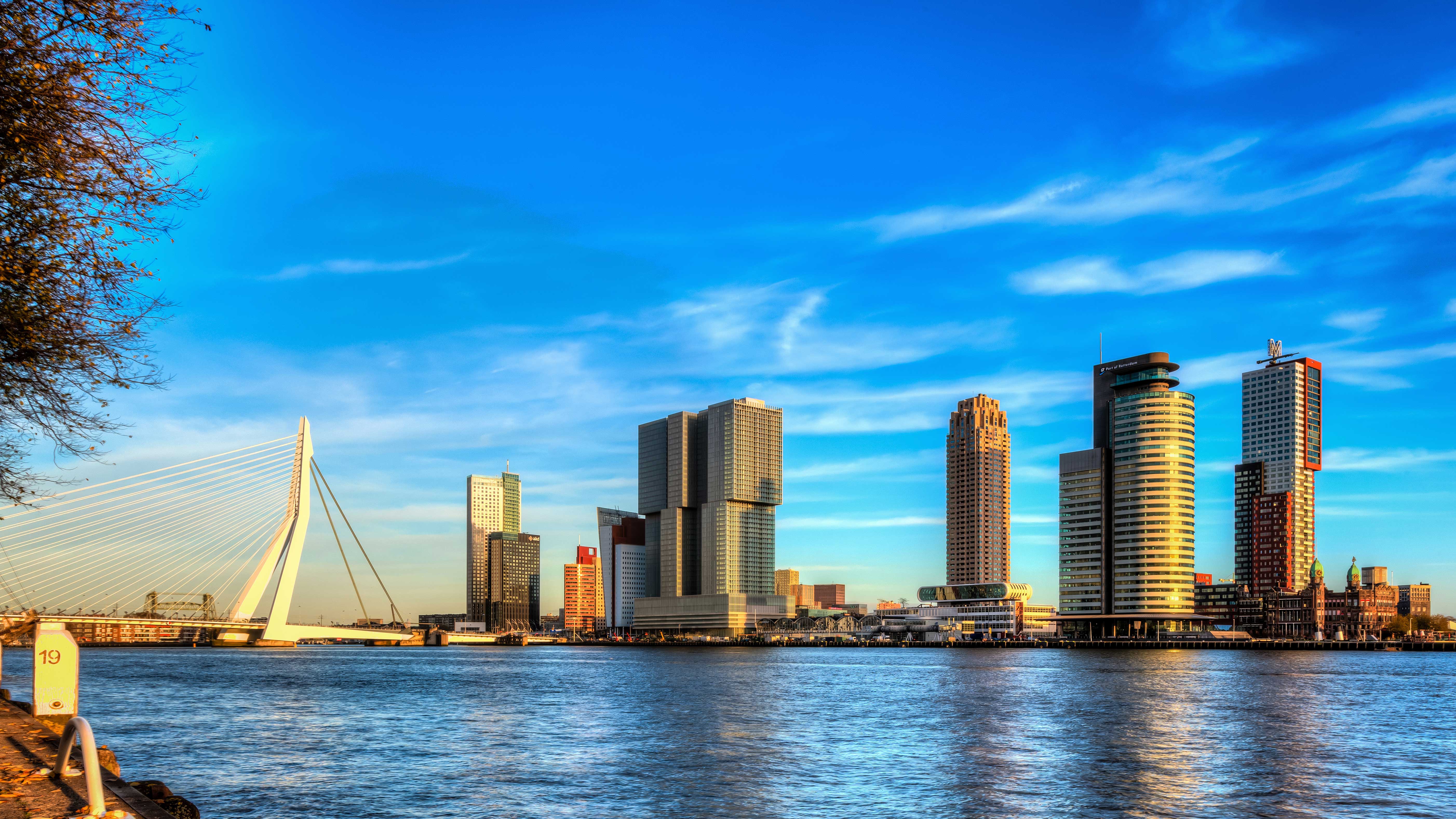The Vision Behind De Rotterdam
In 1997, the city of Rotterdam embarked on an ambitious project to redefine its skyline. The goal was to create a multifunctional building that would symbolize the city's modernity and resilience. The result was De Rotterdam, a striking structure designed by the renowned architect Rem Koolhaas and his firm, OMA.
Design and Construction

De Rotterdam stands on the Wilhelminapier, a location with historical significance as a departure point for emigrants. The building's design features three interconnected towers, each 44 stories high, creating a dynamic silhouette that changes with the viewer's perspective. Construction began in 2009 and was completed in 2013, involving over 7,000 tons of steel and 40,000 cubic meters of concrete.

Multifunctional Spaces
The building spans 160,000 square meters, making it one of the largest buildings in the Netherlands. It houses offices, residential apartments, a hotel, and various retail spaces. This multifunctionality was a key aspect of Koolhaas's vision, aiming to create a "vertical city" where people could live, work, and relax without leaving the building.
![]()
Engineering Challenges
Building on the soft soil of the Maas River presented significant engineering challenges. To ensure stability, engineers used a deep foundation system with piles driven 30 meters into the ground. The construction also had to account for the wind loads on the tall, slender towers, requiring advanced structural solutions.
Impact on Rotterdam's Skyline
Since its completion, De Rotterdam has become a defining feature of the city's skyline. Its presence on the Maas River is a testament to Rotterdam's architectural innovation and urban development. The building's unique design and multifunctional use have set a new standard for urban architecture in the Netherlands.










